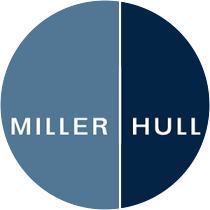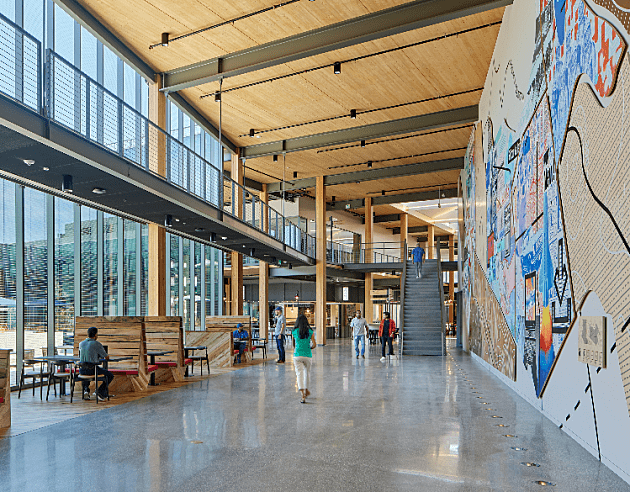- Project uploaded by Nick Clesi on 02-14-2023
- Project last updated by Nick Clesi on 10-06-2025
Newhouse Replacement Building
Olympia, WA
The Newhouse Building Replacement will become a timeless structure where past meets present, state meets citizenry, and place meets policy.
The Newhouse Building has been a part of the State’s campus since 1934, and due to several life-safety and seismic issues, needs to be replaced.
As part of the legislative campus modernization (LCM), the State is in the process of updating many of its civic buildings, and is replacing Newhouse. However, because the campus’ primary architectural style is classical, it is imperative that the Newhouse Building Replacement speak this same language to create an aesthetic consistency that reinforces the strength and spirit associated with Washington Statehood, while embodying a timelessness that fits the campus now and in the future.
The surrounding architecture on the state’s campus all contains rigid proportions, like the three-five-two rule in which buildings have a base, a shaft, and a capital. But Miller Hull understands that these three parts can be interpreted in a number of ways, and we are exploring how architecture today might define these ratios, in addition to elements like axis, scale, proportion, repetition, symmetry, and color palette. As we investigate ways to reimagine historic design motifs for today’s technological capabilities, we are asking ourselves questions like: could shading necessary to mitigate heat gain create similar depth, repetition and proportion on the façade? Could we use a material that feels like the sandstone on the nearby buildings, yet allows for more efficient construction and energy performance? What can we salvage, both architecturally and symbolically? Aiming to abide by a number of governor-led initiatives which include an effort to achieve carbon neutrality reduction in greenhouse gas, Newhouse will be designed for net-zero readiness at the current LEED Platinum level.
As we work to revere and emulate the original architectural concept, we are also looking into other components to layer in, such as elements specific to the Washington state region (forest, beach, Palouse) and resource stewardship, using state-sourced materials like timber to support an ecological footprint and an economically sound state.
Newhouse is representative of a time-honored national process where legislation is made and state administration carried out, and the design is aimed to emphasize this magnitude while also accommodating the kind of functionality needed in any modern workplace. The replacement will contain four-stories of senate suites, caucus offices, a public meeting space, classrooms for high school students for public process and legislature education, and flexible space that can be used and rented by different groups. A centralized four-story stairwell illuminated by a skylight will thread these floors together, connecting spaces and departments, and becoming a mixing chamber in which faculty and statesmen can have impromptu collaborations.
As we work to develop the design, a very engaged stakeholder group with multiple backgrounds offers its input. Neighbors in Olympia who view the campus as a community amenity advocate for landscape design, pedestrian connections, and reduced traffic. Historic preservationists call for close attention to architectural adherence and minimal interventions. The City of Olympia, Seattle Friends of Olmsted Park, and the State’s own legislative staff and capitol campus design committee among others provide their regular feedback as well, prompting our team to employ a meticulous balancing act to ensure all needs are met, all input respected.
An honest mosaic of design concepts and time periods, the Newhouse Building Replacement will reimagine itself, reinterpreting historic ideals, legislating current ones, and serving the people of Washington state.
Project Details
-
Year Built
2024
-
Number Of Stories
4
-
Bldg system
Mass Timber
-
Square footage
59,300
-
Construction Type:
III-B
-
Building Type:
Business (Office)
-
Material Types:
Mass Timber
Dowel-Laminated Timber (DLT)
Hybrid (wood with steel or concrete)
Coatings
Fasteners / Hardware
Project Team
-
DowelLam Dowel Laminated Timber
-
Miller Hull Partnership Architect
-
Alex Dallas Project Designer
-
Chris Hellstern Sustainability Lead
-
Claire Fontaine Project Designer
-
Cristine Traber Project Manager
-
Hoffman Construction Company GCCM
-
Japneet Pahwa Project Designer
-
Jennifer Stormont Interior Lead
-
Jim Hanford Envelope Specialist
-
Lund Ospahl Structural Engineer
-
Nick Clesi Project Architect
-
Ron Rochon Partner In Charge
-
Ruth Baleiko Design Lead
-
Sian Roberts Partner In Charge
-
Steve Doubs Specifications
-
Tahmina Arjona Interior Designer
- Project uploaded by Nick Clesi on 02-14-2023
- Project last updated by Nick Clesi on 10-06-2025



 WOODWORKS
INNOVATION
NETWORK
WOODWORKS
INNOVATION
NETWORK






